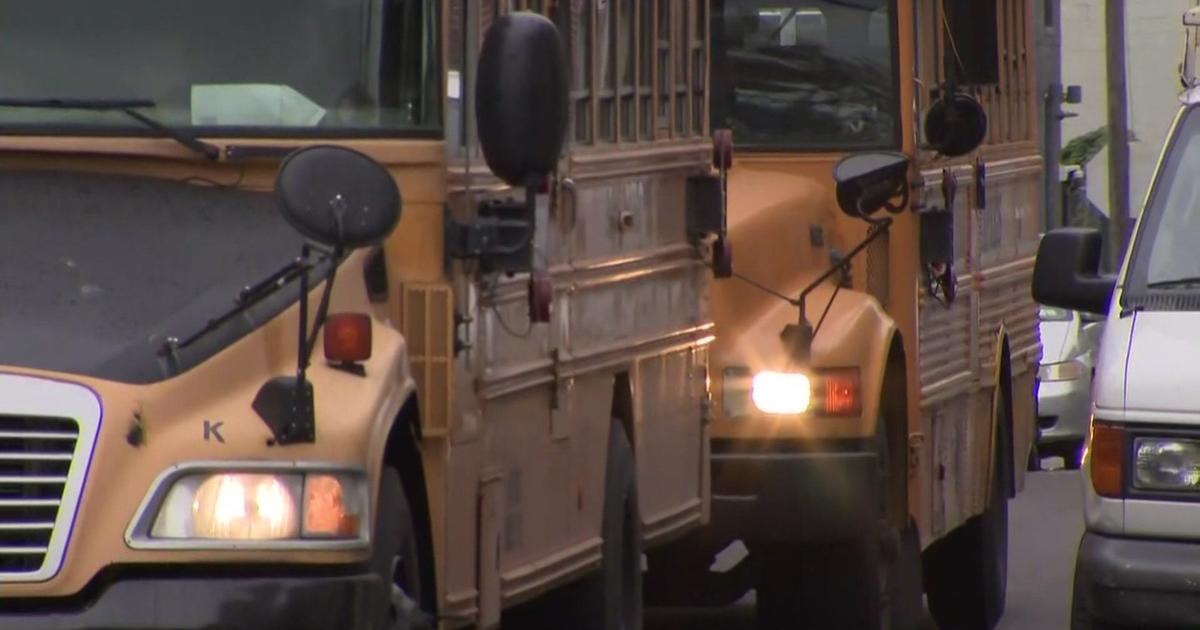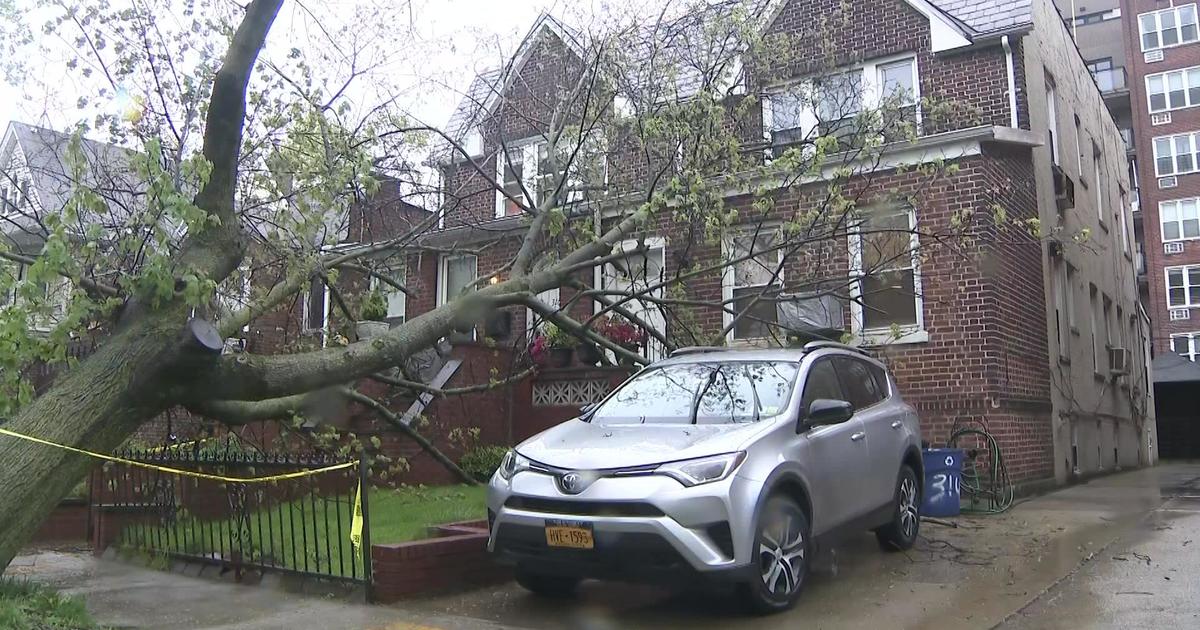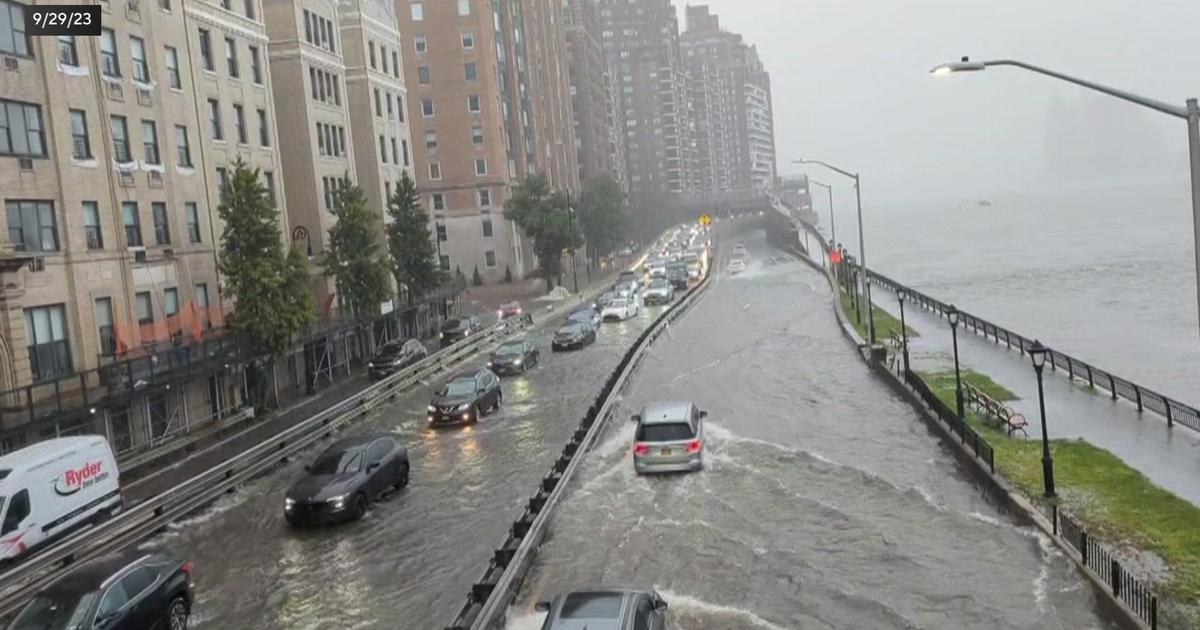Partial Eclipse Hits Tri-State With Moon Covering About 70 Percent Of The Sun
NEW YORK (CBSNewYork/AP) -- The city that never sleeps slowed down for a few minutes as thousands of skywatchers gazed upward for a rare partial solar eclipse visible from our area.
It was the first full-blown solar eclipse to sweep the U.S. from coast to coast in nearly a century. And while New Yorkers didn't get a total eclipse, many were wowed nonetheless. At 2:44 p.m. - peak viewing time, locally - there were the crowds on the streets of New York City, looking upward. About 70 percent of the sun was obscured.
Across the country, Americans gazed in wonder through telescopes, cameras and protective glasses, CBS2's Lonnie Quinn reported. It is hard to believe the moon can completely obliterate any view of the sun, which is 400 times larger. But the moon, of course, is also much closer.
Areas of the country were thrust into absolute darkness and coolness as temperatures dipped – all within minutes.
Oregon was the first state to see the total eclipse.
"What a gorgeous day! Isn't this great people?" Jim Todd, a director at the Oregon Museum of Science and Industry, told a crowd of thousands at an amphitheater in Salem, Oregon.
EXTRAS: Planning & Tracking | Viewing Parties Around NYC | How It Works | #CBSeclipse
In St. Joseph, Missouri, the anticipation started early as thousands converged on the town.
"So excited," said eclipse watcher Alida Mount. "We're kind of geeked out about it."
Lou Pagano and more than 40 other amateur astronomers traveled from Sydney, Australia.
"This is my fifth eclipse," he said. "Each one is different."
The celestial show was expected to be the most observed and photographed eclipse in history, with millions staking out prime viewing spots and settling into lawn chairs to watch, especially along the path of totality — the projected line of shadow created when the sun is completely obscured.
Totality will last just two minutes or so in each location along the narrow corridor stretching all the way across the U.S. heartland to Charleston, South Carolina. Among cities, downstate Carbondale, Illinois -- home of Southern Illinois University -- was in the dark the longest, for two minutes and 40 seconds.
The Scene In Carbondale, Illinois: CBS2 Chicago's Ed Curran Reports
Our CBS News reporters, covering from coast to coast, also completely gave themselves over to the moment.
Jamie Yuccas was in awe as totality took over Madras, Oregon, while Jeff Glor was plunged into darkness in Jackson Hole, Wyoming.
And CBS News anchor Anthony Mason was in Carbondale, where it went from day to night and back to day in just minutes.
The last stop for totality was Charleston, South Carolina at 2:46 p.m.
As CBS2's Brian Conybeare reported, not everyone watched from the ground. Alaska Airlines booked a special charter flight so people could get a closer look from the air.
President Donald and First Lady Melania Trump also got a peek at the Truman Balcony at the White House.
Back in New York, the CBS2 Mobile Weather Lab became the location for an impromptu viewing party. CBS2's camera was outfitted with a special lens, and people passing by were given a once-in-a-lifetime view.
Eye care experts reminded people for days before the eclipse that people should only look with special glasses.
The only time it was safe to look directly without protective eyewear was during totality, when the sun was 100 percent covered in areas that experienced it.
But Astrophysicist Neil deGrasse Tyson had an idea for future eclipse viewing involving something in your kitchen.
"Go into your kitchen and get a spaghetti strainer or colander, not the mesh, the kind with holes in it. Go outside and hold that up over the ground. Each one of those holes will act as a pinhole camera and you'll see hundreds of images of the crescent sun on the ground and you can watch the eclipse unfold safely," he said.
Some used glasses, their cellphones, or homemade viewing boxes – and even paper plates were turned into makeshift shades.
But what really happens if you don't follow all those safety reminders?
At the Eye Center at the Nassau University Medical Center in East Meadow, doctors were on standby Monday night in case someone did make a mistake and look directly at the eclipse.
"It actually burns your retina and becomes a scar," said ophthalmologist Dr. John Alexander.
Alexander said if you looked directly at the eclipse, you could get symptoms such as blurry vision, watery eyes, and blind spots either right away or in the next few days.
"It's how long they're looking and how big of a scar it makes, how many photoreceptors it damages that would determine the blind spot that you would notice," he said.
Astronomers consider a full solar eclipse the grandest of cosmic spectacles.
The Earth, moon and sun line up perfectly every one to three years, briefly turning day into night for a sliver of the planet. But these sights normally are in no man's land, like the vast Pacific or Earth's poles. This will be the first eclipse of the social media era to pass through such a heavily populated area.
NASA and other scientists were in position to watch and analyze from telescopes on the ground and in orbit, the International Space Station, airplanes and scores of high-altitude balloons beaming back live video.
The U.S. mainland hasn't seen a total solar eclipse since 1979 — and even then, only five states in the Northwest experienced total darkness. On Monday, Shawnee National Forest in southern Illinois will see the longest stretch of darkness: 2 minutes and 44 seconds.
The next total solar eclipse in the U.S. will be in 2024. The next coast-to-coast one will not be until 2045.
(© Copyright 2017 CBS Broadcasting Inc. All Rights Reserved. The Associated Press contributed to this report.)




